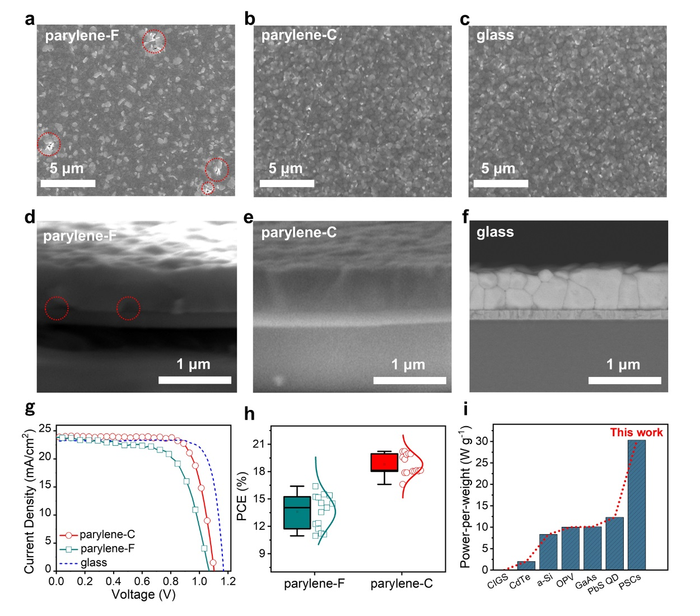Researchers at Peking University in China have fabricated an ultrathin perovskite solar cell based on parylene C, a chlorinated poly(para-xylylene) polymer that withstands high temperatures, with low moisture permeability to moisture and remarkable electrical and physical properties.
They used a commercially available 3-µm-thick parylene C and embedded it in the solar cell via a flip-over transferring (FOT) technique. They claimed that this ensured that the polymer had a smooth surface. They also used chemical vapor deposition (CVD) for the deposition of the parilene C on the pre-cleaned glass substrate. 
In addition, the scientists used a 210-nm-thick zirconium (Zr), titanium (Ti) and gallium doped indium oxide (ITGZO) as the transparent conducting oxide (TCO) electrodes of the solar cell. They used scanning electron microscopy (SEM) to compare the performance of the cell with a reference device based on parylene F, which is another type of polymer, and a cell with a glass substrate without the polymer.
“The perovskite films on parylene-F exhibited poor film coverage with several pinholes on the film surface and showed interfacial voids at embedded bottom interfaces which would lead to charge accumulation and induce the loss of device performance,” the scientists said. “For perovskite films prepared on parylene-C, better film uniformity same as glass-based films was obtained as evidenced by the disappearance of surficial pinholes and interfacial voids.”
Popular content
The parylene-C-based PV cell achieved a power conversion efficiency of 20.2%, which is a value that the researchers describe as in line with that of perovskite cells of common thickness.
“Due to the high PCE and light device weight of 6.67 g/m2 on parylene-C substrates, an outstanding power-per-weight of 30.3 W/g was realized, indicating the great promise of fabricating efficient, ultrathin and ultralight solar cells with parylene-C films,” they concluded.
The researchers presented their findings in “Ultralight flexible perovskite solar cells,” which was recently published in Science China Materials.
This content is protected by copyright and may not be reused. If you want to cooperate with us and would like to reuse some of our content, please contact: editors@pv-magazine.com.



No hint of the longevity.